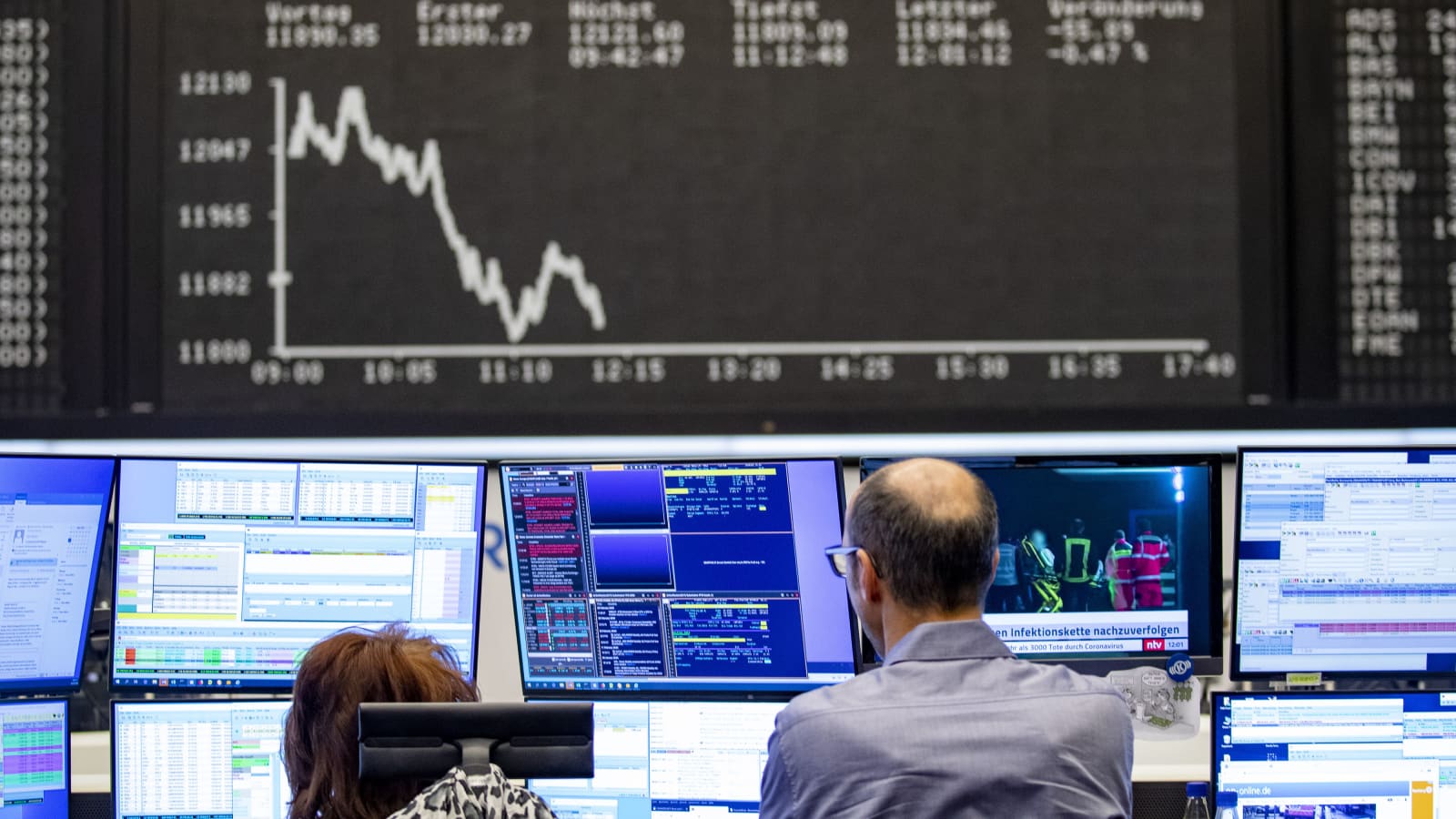Europe stocks fade after shutdown relief bounce
Europe opens higher then fades as Bund yields reach 2.46% and (INDEX:FTSE) outperforms (INDEX:CAC). Equities learn U.S. shutdown resolution doesn’t alter global liquidity tightening path.

European markets opened mixed as investors digested the temporary end to the U.S. government shutdown and recalibrated expectations for global liquidity. The initial relief faded quickly as markets reassessed whether a short-term U.S. fiscal resolution meaningfully alters macro risk. The pan-European benchmark STOXX Europe 600 opened higher but lost momentum before mid-session as bond yields resumed climbing. The shift reflects a deeper dynamic: investors recognize that the fiscal event in Washington does not resolve the structural problem of rising sovereign refinancing costs globally.
The mechanism driving equity hesitation is a renewed upward grind in global yields. The U.S. 10-year Treasury moved back above 4.40 percent, European sovereign yields drifted higher with the German Bund at 2.46 percent, and corporate funding conditions tightened. Higher yields compress equity valuation multiples; every 25 basis point rise in the Bund typically lowers European equity fair value by 3 to 4 percent when earnings momentum is flat. While risk assets initially reacted as if a shutdown resolution removed uncertainty, the rate complex forced a re-pricing within hours.
Sector behavior reveals a defensive pivot. Energy and utilities gained on stable pricing power and steady cash flows, while technology underperformed. The FTSE 100 (INDEX:FTSE) outperformed the CAC 40 (INDEX:CAC) because a weaker British pound amplified earnings for multinational exporters. Banks in Southern Europe faced selling pressure as rising sovereign spreads forced balance-sheet repricing. The euro traded narrowly at 1.10, signaling that FX markets have already priced in a sustained interest-rate differential between the U.S. Federal Reserve and the ECB.
From a macro standpoint, Europe is operating under the weight of uncertainty rather than crisis. GDP growth across the region remains soft—0.2 percent quarter-on-quarter—and survey indicators reveal fragile sentiment. Composite PMI printed at 50.2, just above stagnation. Yet European firms have improved operating leverage; margins remain intact despite lackluster output. This helps explain why equity indices such as the DAX (INDEX:DAX) remain within range of all-time highs even as macro data underwhelm.
The institutional signal from this episode is that Europe is no longer mechanically linked to U.S. fiscal noise. In previous shutdown cycles, European markets showed deeper contagion. Today, investor positioning is more selective, less passive, and more valuation-sensitive. The decoupling is partial, not absolute; long-duration assets still react to U.S. yields, but earnings stability in key European sectors dampens volatility. What matters now is whether falling inflation—2.2 percent in the Eurozone—creates enough space for the ECB to avoid over-tightening into a fragile economy.
Forward risk lies in liquidity withdrawal. If U.S. Treasury issuance remains elevated into Q1 2026, global yields could pressure Europe’s valuation multiples. The level to monitor is 2.60 percent on the German Bund. Sustained trading above that would challenge equity-risk appetite. Conversely, if Eurozone money-supply growth (M3) reaccelerates above 5 percent, equity inflows could resume. Europe’s path remains valuation-led, not growth-led, and markets are trading accordingly.





